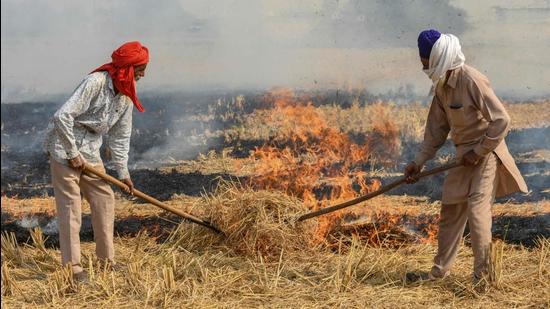Pulp-it | Delhi’s air is always bad. Stubble burning makes it worse
Stubble burning is singularly responsible for pushing AQI into the severe category on most of the few days in which the air is really bad
The latest instalment of the hand-wringing over Delhi’s bad air problem in various quarters is yet another demonstration of our fascination with technology, our indifference to science, and our misinterpretation of radical and decisive action as the perfect solution (when, in truth, it may not even be a good one).

Delhi’s air is always bad. I’ve said this before, and I will say it again — and, anyone in any position of responsibility and who is trying to solve the problem should say this to themselves thrice a day, before meals. Delhi’s air is always bad.
As evidence, I offer Delhi’s average AQI — 225.4 in 2018; currently at around 190 this year. This puts it at the higher end of the moderate category (a reading between 100 and 200), or the lower end of the poor one (200 to 300). The range? 111-360 in 2018; 86-337 in 2019; 63-332 in 2020; and 78-386 thus far this year (all numbers are monthly averages; this year’s November average till the 16th is 386). Indeed, the first fortnight of November does seem to be the worst — in the corresponding period (1-16 November) in 2018, the average AQI was 347; it was 380 in 2019; and 376 in 2020.
There’s a seasonality to the bad air — November, December and January are the worst months. Interestingly, December is always the worst month (average AQI of 360, 337, and 332 in 2018, 2019, and 2020 respectively). There’s rarely any stubble burning in December, so this clearly indicates that there are other factors at work — vehicular emissions; pollution from construction and industrial activity; desert sand and dust carried in on winds from the Thar; and garbage burning. For those who are interested, August or September are the best months.
But stubble burning is singularly responsible for pushing AQI into the severe category on most of the few days in which the air is really bad. As an HT analysis pointed out earlier this week, the maximum number of severe-AQI days that Delhi has seen in the past five years (since 2016) is 25 a year. And a significant contributor to this has been stubble burning. For instance, between October 20 and November 14, the city’s AQI was severe on seven days (on some of the other days, it was in the higher end of the very poor category); and the contribution of stubble burning to the bad air on these seven days was between 26% and 48%. The only other factor that does this, albeit for a day (and rarely, two) is the burning of fireworks during Diwali.
All this can be summed up in one summary statement — Delhi’s air is always bad, with just how bad depending on the season (the temperature, the rains, and the winds), but it is stubble burning that mostly pushes it into the severe zone.
That again, is a statement anyone in any position of responsibility and who is trying to solve the problem should repeat to themselves thrice a day, before meals.
And once they have assimilated it, they can perhaps get around to solving the problem, which will well require, apart from long-term measures, seasonal ones that can be announced in advance.
(Abhishek Jha crunched all the data used in this column)
R Sukumar is the editor-in-chief of Hindustan Times
Pulp-it is a weekly column for HT Premium subscribers
The views expressed are personal
All Access.
One Subscription.
Get 360° coverage—from daily headlines
to 100 year archives.



HT App & Website







